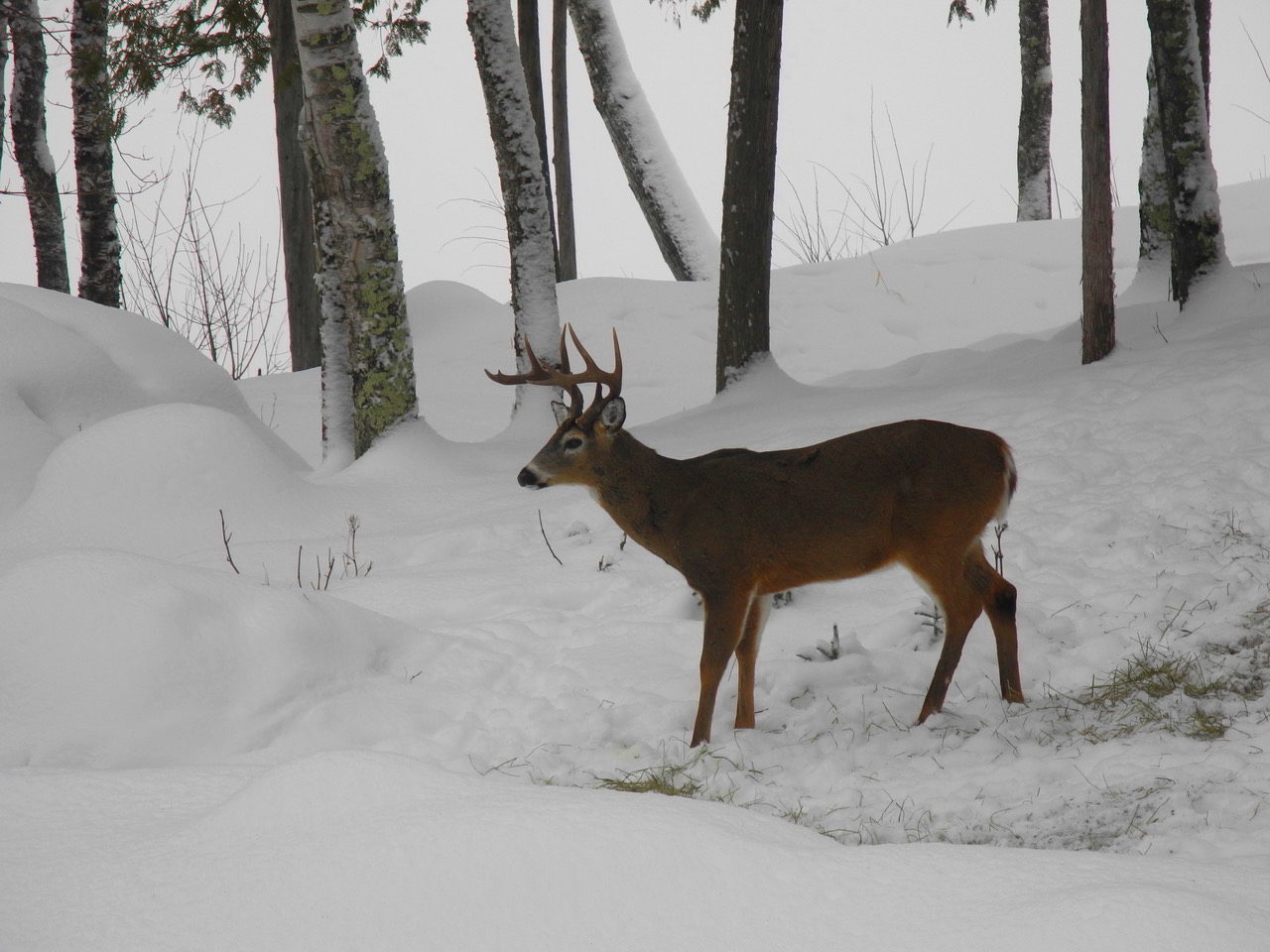From Cache Lake Country by John Rowlands, a 1947 book full of poetic descriptions and practical directions:
The Chief and I have been dressing the skin of his first buck which will make fine moccasins later on, although he wants to get a moose, too, for its hide will stand more wear…. A lot of hard work goes into making a good skin…. To begin with, the Chief mixes about two quarts of wood ashes in half a wash tub of warm water and puts the skin in to soak so that the hair can be scraped off easily… after two or three days. To scrape off the hair, hang the skin over a log set up at an angle to make it easy to work on, and scrape with an iron tool with the edge ground flat…. When all the hair has been removed… turn the hide over and start what is called “fleshing” it, which is the job of scraping off every trace of flesh and fat…. [Next] it ought to be rinsed in clear warm water and then wrung out. It is a pretty awkward job to wring out a wet deerskin [imagine a moose!] so the Chief and I rigged up a crude sort of wringer made of two short lengths of spruce logs…. When you have all the water out of the hide the job of tanning begins…. The Chief saves the brains of the deer, dries them… and boils them slowly until they are soft…. He pours them in the wash tub and adds just enough water so that the hide can be thoroughly soaked in the mixture where it must stay until the skin is just as soft as an old glove…. While the skin is soaking it should be thoroughly worked to help soften it…and pull it in every direction with all your strength to make the fibers pliable…. There is no easy way and it is safe to say that you can hardly work a skin too much…. The final step which keeps the skin soft even after it has been wet through se is smoking for several days in… as little heat as possible…. The job is done when the skin has taken on a beautiful soft yellow tone.

